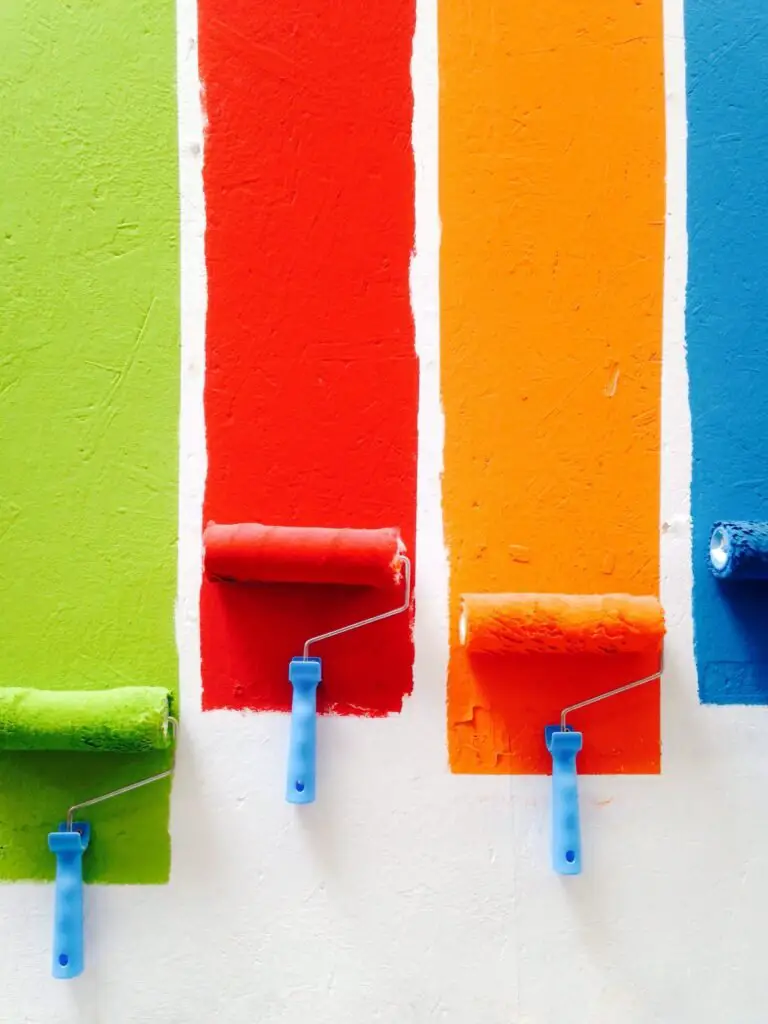In the world of painting, the eternal debate rages on: do we really need to prime before using paint and primer in one? The all-in-one product claims to provide the best of both worlds, saving time and effort. But does it actually deliver? In this article, we will explore the pros and cons of using paint and primer in one, shedding light on this age-old question once and for all. So, if you’ve ever found yourself standing in the paint aisle, pondering this very dilemma, read on to discover the truth behind this popular product.

Do I Need To Prime Before Using Paint And Primer In One?
Table of Contents
Understanding Paint and Primer in One
What is paint and primer in one?
Paint and primer in one is a type of paint that combines both the qualities of a primer and a paint in a single product. Traditionally, when painting a surface, a separate primer is required to provide a smooth, even base for the paint. However, paint and primer in one eliminates the need for a separate primer, as it is designed to serve both purposes in a single application.
How does it work?
The concept behind paint and primer in one is that it contains a higher concentration of binders and pigments compared to regular paint. These binders act as a primer, adhering to the surface and creating a strong bond for the paint to adhere to. Additionally, the pigments in the product provide excellent coverage, helping to hide any imperfections on the surface.
When applying paint and primer in one, the product will penetrate the surface, creating a solid foundation for the paint to adhere to. This eliminates the need for a separate primer, saving time and effort during the painting process.
Advantages of using paint and primer in one
One of the main advantages of using paint and primer in one is the time-saving aspect. Since you don’t have to apply a separate coat of primer, it can significantly reduce the time required to complete a painting project. This is particularly beneficial for larger projects or when there is a tight deadline.
In addition, paint and primer in one can help save money, as you only need to purchase and apply one product instead of buying separate primer and paint. It also eliminates the extra step of applying primer, which can be especially beneficial for beginners or those who may not be as experienced with painting techniques.
Furthermore, paint and primer in one offers excellent coverage and adhesion. The higher concentration of binders allows the paint to adhere better to the surface, resulting in a longer-lasting finish. It also provides a more uniform appearance by hiding any imperfections, such as uneven textures or discoloration on the surface.
When to Use Paint and Primer in One
Surface conditions suitable for paint and primer in one
Paint and primer in one is suitable for a variety of surface conditions. It can be used on previously painted surfaces, as well as bare or uncoated surfaces. It is also effective on drywall, wood, metal, and concrete, making it a versatile option for different projects.
Interior vs. exterior applications
Paint and primer in one can be used for both interior and exterior applications. However, it’s essential to consider the specific product and its suitability for the intended application. Some paint and primer in one products are formulated specifically for interior use or may not be suitable for high-moisture or extreme weather conditions. It is crucial to read the manufacturer’s instructions and choose the appropriate product for the specific project and environment.
Specific paint and primer in one products
There are various paint and primer in one products available on the market. Each product may have slightly different formulations and features, so it’s important to choose the one that best fits your needs. Some products offer additional benefits, such as stain-blocking properties or advanced adhesion technology. Researching and comparing different products can help you find the one that matches your specific requirements.
Benefits of Priming
Improved paint adhesion
Priming the surface before painting helps to improve paint adhesion. A primer creates a rough surface for the paint to grip onto, ensuring that it adheres properly and does not peel or flake over time. By using a paint and primer in one, you can achieve good adhesive properties without the need for a separate primer.
Uniform surface appearance
Priming helps to create a uniform surface appearance by filling in any imperfections and providing a smooth base for the paint. Using a paint and primer in one ensures that the finish is consistent, hiding any surface flaws and resulting in a professional-looking outcome.
Enhanced durability and longevity
Priming the surface with a primer helps to enhance the durability and longevity of the paint job. It creates a protective barrier between the substrate and the paint, preventing moisture, stains, and other contaminants from penetrating the surface. By using paint and primer in one, you can achieve this added durability without the extra step of applying a separate primer.
Stain blocking
Certain primers, including some paint and primer in one products, offer stain-blocking properties. These primers are designed to prevent stains, such as watermarks, smoke, or tannin bleed, from seeping through the paint and discoloring the finish. This can be particularly useful when painting over surfaces with existing stains or in areas prone to staining.
Preventing color bleeding
Priming is essential when transitioning from a dark or vibrant color to a lighter shade. Without a primer, the previous color may bleed through the new paint, resulting in an uneven and less appealing finish. A primer, or a paint and primer in one designed for this purpose, helps to block the previous color and ensure a clean, crisp final appearance.
Smoothing out surface imperfections
One of the primary functions of primer is to fill in surface imperfections, such as small cracks, holes, or rough textures. Priming the surface before painting helps to create a smooth and even base for the paint. By using paint and primer in one, you can achieve this benefit without the need for a separate primer application.
When Priming is Necessary
New or uncoated surfaces
If you are working with a new or bare surface that has never been painted or coated before, priming is necessary. A primer helps to seal the surface, creating a stable base for the paint to adhere to. It also helps to prevent the absorption of moisture, ensuring that the paint does not blister or peel prematurely.
Previously painted surfaces
Priming is necessary on previously painted surfaces in certain situations. If the existing paint is in good condition and you are applying a new coat of the same type of paint, you may not need to prime. However, if the existing paint is flaking, peeling, or in poor condition, priming is essential to create a stable surface for the new paint to adhere to. Additionally, if you are changing the type of paint (e.g., switching from oil-based to latex), priming is necessary to improve adhesion.
Stained or damaged surfaces
When dealing with stained or damaged surfaces, priming is necessary to ensure that the stains do not seep through the new paint and to create a smooth, uniform finish. A primer with stain-blocking properties is especially beneficial in these situations.
Different surface materials
Some surface materials, such as bare wood or metal, require priming to improve adhesion and protect the substrate. The type of primer used may vary depending on the specific material, so it’s important to choose the appropriate primer for the surface you are working with.
Changes in color or sheen
When making significant changes in color or sheen, priming is necessary to prevent color bleeding or to create an even base for the new paint. This is particularly important when transitioning from a dark color to a lighter one or when switching from a glossy to a matte finish.
Covering dark or vibrant colors
Dark or vibrant colors can be challenging to cover with a new paint color, as they may bleed through and affect the final appearance. Priming the surface before painting helps to block these colors and achieve the desired result. A primer specifically designed for this purpose, or a paint and primer in one product with excellent coverage properties, is recommended for covering dark or vibrant colors.

Exceptions to Priming
Specific paint and primer in one products
While priming is generally recommended for most painting projects, there are specific paint and primer in one products available that eliminate the need for a separate primer. These products are formulated to provide excellent adhesion and coverage without the extra step of priming. However, it is crucial to choose a high-quality paint and primer in one product that is suitable for the intended application and surface conditions.
Well-maintained surfaces
If the surface is in excellent condition and has been maintained properly, priming may not be necessary. Well-prepared and clean surfaces, free from any peeling or flaking paint, may allow the paint and primer in one to adhere properly without the need for additional priming.
Using self-priming or all-in-one paints
Some paints are specifically marketed as self-priming or all-in-one paints, which claim to have primer-like qualities. These products are formulated to provide good adhesion and coverage without the need for a separate primer. However, it’s important to research and choose a reputable product that is suitable for the specific project and surface conditions.
Painting over previously primed surfaces
If the surface has already been properly primed and the existing primer is still in good condition, it may not be necessary to apply an additional primer. However, it’s essential to evaluate the condition of the existing primer and ensure that it is still providing a stable and suitable base for the new paint.
Preparation Guidelines
Clean the surface
Before applying paint and primer in one, it’s crucial to clean the surface thoroughly. Remove any dirt, dust, grease, or other contaminants that may compromise the adhesion of the paint. Use a mild detergent and water or a suitable surface cleaner to ensure a clean and debris-free surface.
Repair any damages
Inspect the surface for any damages, such as cracks, holes, or dents. Repair these damages using appropriate fillers or patching compounds, following the manufacturer’s instructions. Allow the repairs to dry and sand them smooth if necessary before proceeding with the primer and paint application.
Sanding or smoothing
For surfaces with rough textures or imperfections, sanding can help to create a smoother base for the paint. Lightly sand the surface using fine-grit sandpaper to remove any bumps or roughness. This will help the paint and primer in one adhere better and create a more even finish.
Removing old paint or coatings
If the surface has old, peeling, or flaking paint, it’s important to remove it before applying paint and primer in one. Use appropriate methods such as scraping, sanding, or chemical paint strippers to remove the old paint. Follow safety precautions and recommendations from the manufacturer when working with paint removal products.
Priming bare or porous surfaces
In some cases, bare or highly porous surfaces may require an additional layer of primer before applying paint and primer in one. This helps to seal the surface and improve the adhesion of the paint. Choose a suitable primer for the specific surface and follow the manufacturer’s instructions for priming.
Using appropriate primer
If a separate primer is required or recommended for the specific project, choose a primer that is suitable for the surface material and intended use. There are different types of primers available for various surface conditions, such as wood, metal, or drywall. Research and select the appropriate primer to ensure optimal results.

Tips for Using Paint and Primer in One
Proper application techniques
When using paint and primer in one, it’s important to follow proper application techniques to achieve the best results. Start by preparing the surface as indicated in the preparation guidelines. Stir the paint and primer in one thoroughly before use to ensure a consistent mixture. Apply the product using a brush, roller, or paint sprayer, following the manufacturer’s instructions for the specific product. Proper application techniques include maintaining a wet edge, using even strokes, and applying multiple thin coats if necessary.
Multiple coats or touch-ups
Depending on the desired coverage and appearance, multiple coats of paint and primer in one may be necessary. Apply the first coat, allowing it to dry completely before applying additional coats. If touch-ups are needed, ensure that the previously painted area is thoroughly dry before touching up the paint. Follow the manufacturer’s recommendations for drying times between coats and touch-ups.
Drying and curing times
Paint and primer in one products have specific drying and curing times, which may vary between different brands and formulations. Drying time refers to the time it takes for the product to dry to the touch, while curing time refers to the time it takes for the paint to fully harden and achieve its maximum durability. It’s important to allow sufficient drying and curing times between coats and before subjecting the painted surface to normal use or exposure.
Choosing the right product
There are various paint and primer in one products available, so it’s important to choose the one that best suits your needs. Consider factors such as the surface material, the desired finish, and any additional features you may require, such as stain-blocking or enhanced adhesion. Research and compare different products, read customer reviews, and consult with experts if needed to make an informed decision.
Cost Considerations
Paint and primer in one vs. separate products
When considering cost, it’s essential to compare the price of paint and primer in one to the combined cost of purchasing separate primer and paint products. In some cases, using a paint and primer in one product can be more cost-effective, as you only need to purchase and apply one product. However, there may be instances where a separate primer and paint offer better results or functionality, and the additional cost may be justified.
Efficiency and time-saving benefits
One of the significant advantages of paint and primer in one is its efficiency and time-saving benefits. By combining the qualities of primer and paint into a single product, it reduces the number of steps and time required for a painting project. This can be particularly advantageous when working on large or time-sensitive projects, where time-saving is a priority.
Long-term savings
Another cost consideration is the long-term savings associated with using paint and primer in one. A high-quality paint and primer in one product can provide excellent durability and longevity, reducing the need for frequent repainting or touch-ups. By investing in a durable product upfront, you can save money in the long run by avoiding premature paint failure or the need for frequent repainting.

Common Mistakes to Avoid
Skipping proper surface preparation
One of the most common mistakes when using paint and primer in one is skipping proper surface preparation. It’s essential to follow the recommended preparation guidelines, including cleaning, repairing, and sanding the surface as needed. Neglecting these steps can result in poor adhesion, uneven coverage, or premature paint failure.
Using paint and primer in one on unsuitable surfaces
Not all surfaces are suitable for paint and primer in one. Some surfaces may require a separate primer or a different type of paint. It’s important to assess the surface material, condition, and any special requirements before choosing a paint and primer in one product. Using it on an unsuitable surface can lead to adhesion problems or an unsatisfactory finish.
Not following the manufacturer’s instructions
To achieve the best results, it’s essential to read and follow the manufacturer’s instructions for the specific paint and primer in one product you are using. Each product may have specific recommendations regarding application techniques, drying times, or surface preparation. Deviating from these instructions can compromise the quality and durability of the paint job.
Expecting miracles
While paint and primer in one can offer excellent coverage and adhesion properties, it’s important to set realistic expectations. It may not completely cover extreme stains or heavily damaged surfaces. If you are dealing with severe issues, such as deep stains, extensive damage, or challenging surface conditions, it’s best to address those problems separately before using paint and primer in one.
Conclusion
Paint and primer in one can be a convenient and efficient option for many painting projects. By combining the qualities of a primer and paint in a single product, it saves time and effort during the painting process. It offers benefits such as improved adhesion, uniform surface appearance, enhanced durability, and stain blocking. However, proper surface preparation, product selection, and following the manufacturer’s instructions are key to achieving the best results. By understanding when to use paint and primer in one, priming necessities, and considering cost factors, you can make informed decisions and ensure a successful painting project.


